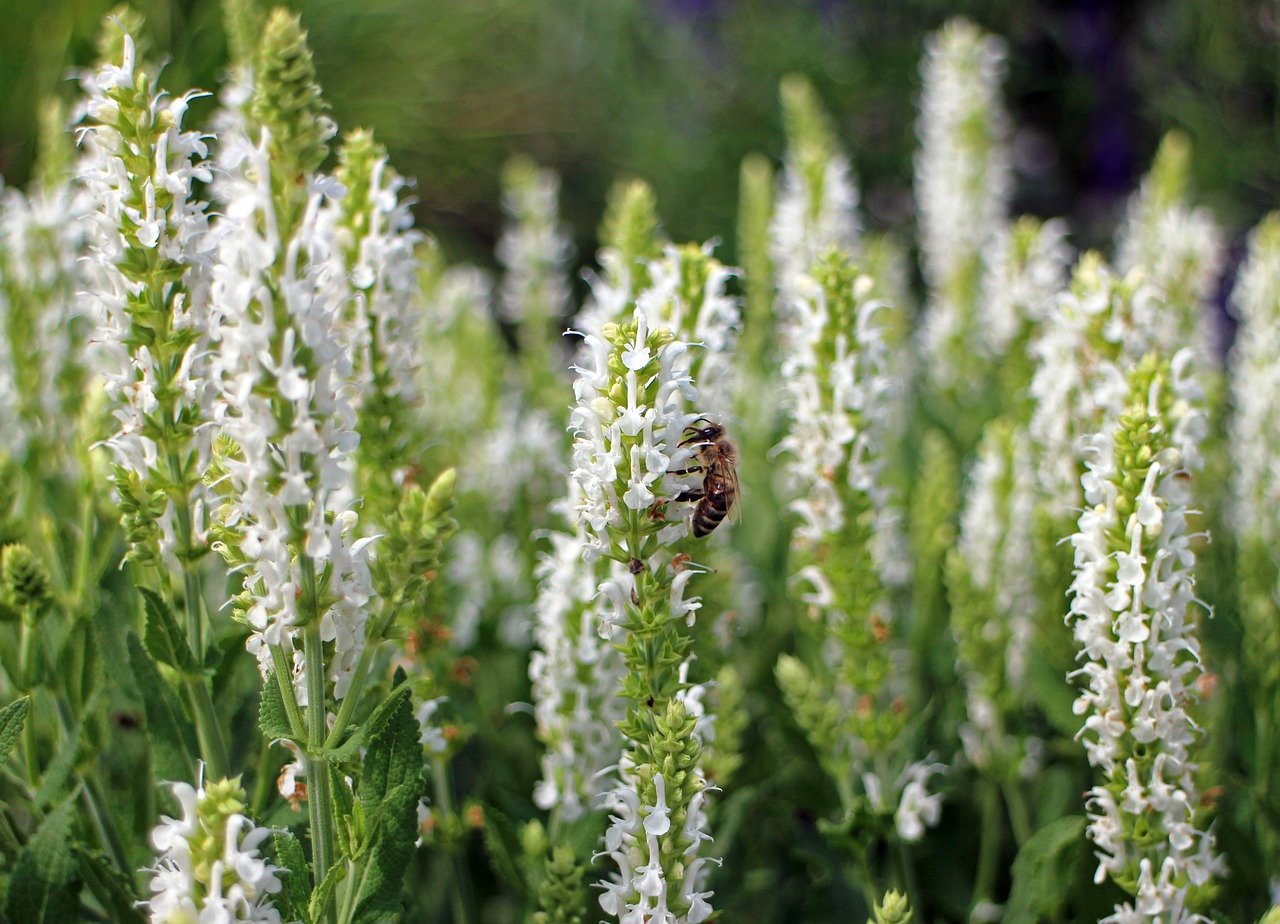White Sage
Overview
White sage, known as Salvia apiana, thrives in the arid soils of southern California to Mexico. This softly white, aromatic plant stands 1-2 feet tall and is deeply rooted in Native American purification rituals. Outside its ceremonial use, there’s budding interest in white sage’s potential antimicrobial properties, but scientific evidence and safe usage guidelines are still sparse.
Common name(s): Common names include bee sage, sacred sage, and Californian white sage.
Scientific name: Salvia apiana

Characteristics
Known for its white-woolly appearance, strong sage-like aroma, and traditional use in Native American smudging ceremonies.
Region
Typically found in the sandy soils of southern California and extending into Mexico.
Natural Habitat
Desert regions and sandy soils of southern California and parts of Mexico.
Cultivation
Prefers full sun exposure, dry conditions with well-draining soil, and minimal watering once established.
Traditional Usage
The traditional uses of white sage are deeply rooted in the practices of Native American cultures. Central to these practices is the ritual of smudging, which plays a significant role in purification ceremonies. These ceremonies have been a cornerstone of cultural spirituality, with the belief that the act of burning white sage can clear negative energy.
- Purification of people and spaces by removing negative energy.
- Use of smoke for cleansing objects such as tools or personal items.
- Improvement of a sense of calm and well-being during rituals.
- Spiritual cleansing that is said to foster inner peace and harmony.
While the use for these ceremonies is well-established, it’s important to note that other potential medicinal uses of white sage are still being studied, and smoking it for its calming effects is not traditionally endorsed1.
Historical Usage
Used for purification ceremonies by Native American cultures to cleanse negative energy.
Common Usage
Commonly used in smudging ceremonies for purification and spiritual cleansing.
Effects
White sage is often associated with purification and has been traditionally used by Native American cultures for its cleansing effects. The powerful aroma and unique properties of white sage contribute to its revered status in various ceremonial practices. While it’s generally known that white sage can have several effects, here’s a breakdown of its general applications:
- Promotes calm and well-being, contributing to a peaceful environment when used in smudging ceremonies.
- Believed to possess antimicrobial and antibacterial properties, which may support health in various ways when used appropriately.
- Involved in spiritual cleansing, helping to rid spaces, objects, and people of perceived negative energy.
Fresh leaves of white sage exhibit a grey-green appearance, while dried leaves take on a greyish white color. Its flavor is significantly aromatic, with a more potent profile compared to common sage. However, it’s essential to note that the specific active compounds in white sage are not fully understood, and its effects have not been exhaustively studied in clinical settings1.
Reflecting on cultural practices, it’s worth recognizing the importance of ethical usage and harvesting of white sage, considering the sustainability concerns and its spiritual significance. Although not regulated under international drug laws, the responsible engagement with this plant is encouraged to ensure its lasting availability for traditional purposes.
Effects when smoking
Smoking white sage may have certain effects, though these are largely based on anecdotal evidence rather than scientific studies. When individuals smoke white sage, they report a range of effects:
- A calming sensation that can help in reducing stress levels.
- Potential spiritual upliftment, given white sage’s historical use in purification ceremonies.
However, it’s important to note that there is a lack of empirical support for these effects. White sage contains compounds that are yet to be fully isolated and researched in the context of smoking. Furthermore, due to ethical considerations and potential health risks, individuals should be cautious. Consultation with a healthcare professional is advised before smoking white sage for medicinal purposes.
White sage is characterized by its intensely aromatic and pungent flavor, similar to common sage but much stronger. Given its traditional use in smudging, these qualities are often experienced in a different context.
The lack of traditional endorsement and scientific evidence for smoking white sage underscores an important gap in our understanding of this practice. Therefore, while some users report positive subjective experiences, these should be approached with care and a critical eye towards both personal health and respect for cultural practices.
Flavor Profile
Intensely aromatic with a stronger, more pungent flavor than common sage.
Edible Parts
Leaves
Effects when Smoked
Anecdotal claims suggest a calming effect; however, empirical evidence is lacking.
User Experiences
Users typically report feelings of peace and cleansing after using white sage in smudging ceremonies.
Medicinal Benefits
White sage has an esteemed place in traditional healing practices, particularly amongst Native American cultures. Due to its aromatic properties, this herb has been linked to several potential medicinal benefits:
- Antimicrobial and antibacterial: It’s suggested that white sage could help in fighting against certain bacteria and microbes.1
- Sense of calm: Traditional use in smudging ceremonies is said to engender a feeling of relaxation and mental clarity.
- Spiritual cleansing: Smudging with white sage is believed to purify spaces and individuals from negative energies.
It’s crucial to note, however, that scientific research to fully understand and confirm these effects is still ongoing. While smoking white sage is not traditional and has scarcely been studied, it is always recommended to consult a healthcare professional before using any herb for medicinal purposes due to the risks of toxic effects. Additionally, ethical considerations, including sustainability and cultural respect, should be taken into account when harvesting and using white sage.
History and Folklore
Historically, white sage was revered by Native American cultures for its purifying qualities. It was central to smudging ceremonies, which are rites that involve burning the herb to produce smoke intended to cleanse people and places of negative energies.
This cleansing could stretch to items and entire areas, signifying a holistic approach to spiritual hygiene. These practices were steeped in rich cultural significance, marking the white sage as a plant of profound importance to these communities1.
Side Effects and Contraindications
Smoking white sage may lead to side effects such as irritation to the respiratory system, especially for those with asthma or other breathing conditions. Since there is limited scientific evidence on the effects of smoking white sage, the full spectrum of potential side effects is not well-documented. Caution is advised due to the possibility of toxic effects should the plant be used inappropriately1.
It’s important to consider contraindications. Individuals who are pregnant or breastfeeding should avoid using white sage due to the lack of safety data. As with any herb, those with known allergies to plants in the Lamiaceae family should not use white sage. Always consult a healthcare professional before incorporating it or any herb for medicinal purposes, to ensure it does not interfere with existing health conditions or medications1.
Legal Status
The legality of white sage is not governed by international drug control laws, which means it is legal to own and use. However, due to its special status culturally and the issue of overharvesting, the use of white sage should be approached with respect and mindfulness of its significance to native cultures. There are no restrictions on its sale, but ethical sourcing is encouraged to ensure sustainability and honor cultural practices1. Ethical harvesting practices are crucial to maintain the plant’s population and preserve its use for future generations.
It’s important to note that while legal, the ethical aspect surrounding white sage requires attention and care from those who choose to use it.
References
1. USDA Plants Database. https://plants.usda.gov/DocumentLibrary/plantguide/pdf/pg_arlu.pdf
2. Epic Gardening. https://www.epicgardening.com/white-sage-plant/
3. Wikipedia. https://en.wikipedia.org/wiki/Salvia_officinalis
Nicolas Duval
Nicolas is a passionate advocate for nature and the art of wildcrafting. His dedication shines through in Wildcraftia, a website he meticulously crafted to serve as a haven for nature enthusiasts worldwide. Driven by a deep appreciation for nature’s connection to humanity, Nicolas embarked on his journey in 2011 with SmokableHerbs, a platform showcasing his love for nature’s bounty. Building upon this foundation, he established Smokably, a thriving online store offering premium herbs and blends to a global audience.
